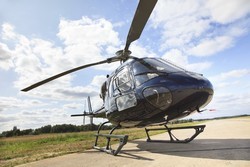Gurney flaps make their way onto helicopter rotor blades
Gurney flaps have been implemented on a variety of aerofoils, from aeroplane wings to helicopter rotor blades to air turbines, and race cars. AGFs are a key objective of the EU's Clean Sky aerospace research programme. Adding an active component provides the ability to adapt to changing conditions and a system that significantly outperforms its passive analogue. It could provide important vibration damping at less weight than current solutions as a system that addresses vibration at its source, the blades. Researchers initiated the EU-funded project PT656 (Gurney flap actuator and mechanism for a full scale helicopter rotor blade) to evaluate the capabilities of a helicopter main rotor blade incorporating an AGF. The AGF assembly included an actuator and a flexible body that flexes in reaction to the actuator motion. The test campaign studied performance of the blade held in a fixed position. Stress analyses evaluated performance under various operational loads, and thermal analyses investigated heat transfer from the motor and moving parts of the actuator to the blade. AGF's flap was mounted on a flexure bearing, reducing hysteresis and frictional wear. The actuator was sufficiently lubricated so that load bearing components have the right amount of grease for trouble-free operation. It was also designed in such a way that centrifugal forces are balanced, thus eliminating the need for external control. The brushless motor balances high acceleration with minimum power consumption for operation in a large range of bandwidths. The AGF could be the key to increasing the performance of helicopter rotor blades. Benefits include greater lift, lower fuel consumption and fewer emissions. Implementation into rotorcraft will make a major contribution to the EU's Clean Sky programme to reduce the environmental impact of air travel.




